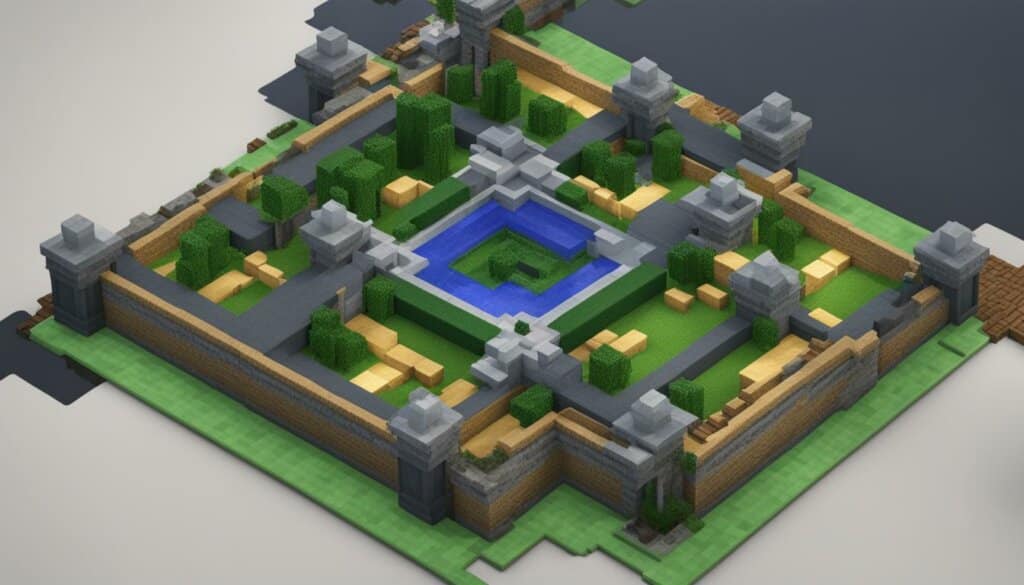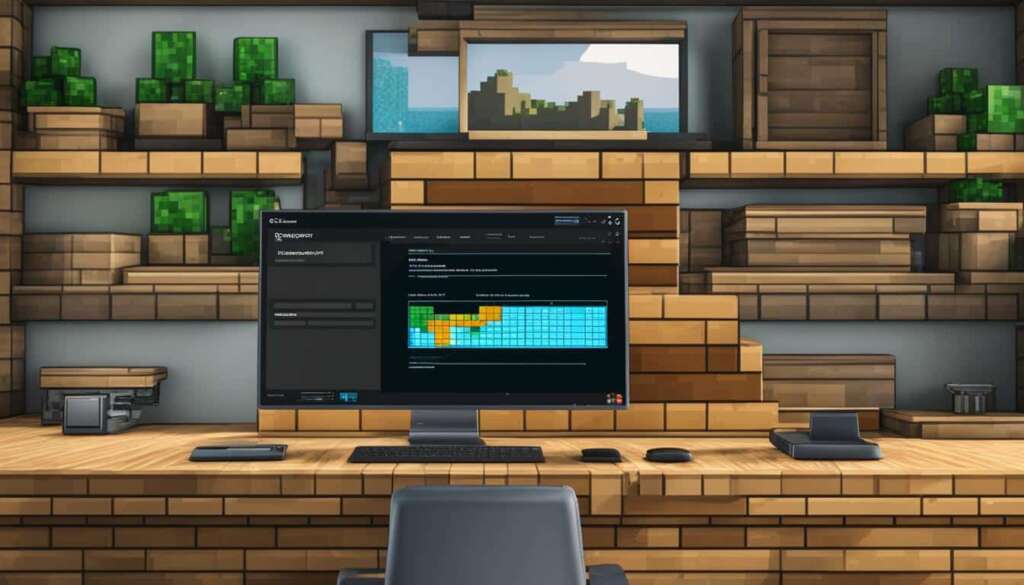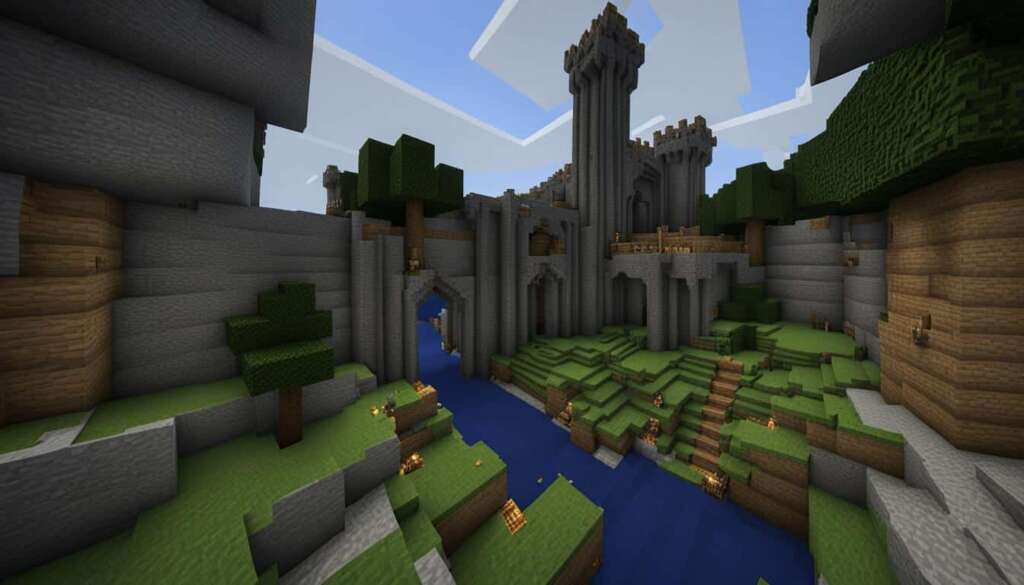Table of Contents
Welcome to the world of Minecraft! If you are an avid player, you know how exciting it is to build and explore in this virtual universe. But what if you want to take your gameplay to the next level? What if you want to invite others to join your adventures and create a multiplayer experience?
That’s where port forwarding comes in. Port forwarding allows you to make your Minecraft server visible to the public, opening the doors for others to connect and play with you. In this tutorial, we will guide you through the process of port forwarding a Minecraft server on Windows, macOS, and Linux systems.
Before we dive into the technical details, let’s clarify what port forwarding means. In simple terms, it’s a way to redirect incoming network traffic to a specific device or service on your local network. By configuring port forwarding for your Minecraft server, you can enable others to access your server from outside your local network.
Throughout this tutorial, we will provide step-by-step instructions on how to find the default server port, allow it through your firewall, and configure your router to forward the necessary TCP and UDP ports. By the end, you’ll have the knowledge and tools to unlock your Minecraft server and welcome players from around the world to join you on your epic quests.
So let’s get started on this exciting journey of port forwarding your Minecraft server!
Setting Up Your Minecraft Server
Before you can begin port forwarding your Minecraft server, you need to set up the server itself. Follow these steps to ensure a smooth setup process:
- Download the Minecraft App: Start by downloading the Minecraft app from the official Minecraft website. Choose the version that is compatible with your operating system.
- Install Java: Minecraft requires Java to run. Make sure you have the latest version of Java installed on your computer. If not, download and install it from the official Java website.
- Run the Server.jar File: Once you have the Minecraft app and Java installed, locate the server.jar file in the Minecraft app folder. Double-click on the file to run the Minecraft server. This will generate the necessary files for your server.
- Edit the server.properties File: Open the server.properties file in a text editor. Look for the “server-port” line and specify the port number you want to use for your Minecraft server. Save the changes and close the file.
- Configure Firewall: To ensure that your Minecraft server can be accessed, configure your firewall to allow the Minecraft port number through. This will vary depending on your operating system and firewall software. Refer to your firewall documentation or seek online tutorials for specific instructions.
Remember, the server.properties file is where you can make additional customizations to your Minecraft server, such as setting the maximum number of players and enabling features like PvP or survival mode. Take the time to explore these options and tailor your server to your preferences.
Once you have completed these steps, your Minecraft server is ready to be port forwarded. In the next section, we will guide you through the process of configuring your firewall and network settings to ensure your server is accessible from the internet.
| Minecraft Server Setup Checklist |
|---|
| Download the Minecraft App |
| Install Java |
| Run the Server.jar File |
| Edit the server.properties File |
| Configure Firewall |
Configuring Firewall and Network Settings
To ensure that your Minecraft server is accessible from the internet, you need to configure your firewall and network settings. Configuring the firewall and network settings is crucial in allowing incoming connections on the Minecraft port number. Let’s take a look at the steps you need to follow on different operating systems:
Windows
To configure the firewall settings on Windows, you need to open Windows Defender Firewall and create new rules to allow inbound TCP and UDP connections on the Minecraft port number. Here’s a step-by-step guide:
- Press the Windows key + R to open the Run dialog box.
- Type wf.msc and hit Enter to open Windows Defender Firewall.
- Click on “Inbound Rules” in the left-hand menu.
- Click on “New Rule” in the right-hand menu to open the New Inbound Rule Wizard.
- Select “Port” and click Next.
- Choose “TCP” and specify the Minecraft port number (default is 25565).
- Repeat the previous step for UDP.
- Click Next, select “Allow the connection,” and click Next again.
- Select the network types where the rule should apply (Private, Public, or both).
- Give the rule a name and click Finish.
macOS
To configure the firewall settings on macOS, go to System Preferences and configure the firewall to allow incoming connections for the Minecraft application. Here’s how you can do it:
- Click on the Apple menu and select “System Preferences.”
- Click on “Security & Privacy” and go to the “Firewall” tab.
- Click on the lock icon and enter your password to make changes.
- Click on “Firewall Options…”
- Click the “+” button and locate the Minecraft application.
- Select the application and click “Add.”
- Click “OK” to save the changes.
Linux
To configure the firewall settings on Linux, you will need to use the appropriate commands. The commands may vary depending on the Linux distribution you are using. Here’s a general guide:
- Open a terminal window.
- Enter the command to allow incoming connections on the Minecraft port number. For example, if you are using iptables, you can use the following command:
sudo iptables -A INPUT -p tcp --dport 25565 -j ACCEPT - Repeat the previous step for UDP:
sudo iptables -A INPUT -p udp --dport 25565 -j ACCEPT - Save the changes and exit the terminal.
By configuring the firewall and network settings on your operating system, you are ensuring that your Minecraft server is accessible to players from around the world. Proceed to the next section to learn how to configure port forwarding on your router.

Configuring Port Forwarding on Your Router
Once you have set up your Minecraft server and configured your firewall, the next step is to configure port forwarding on your router. This will allow incoming connections from players outside your local network to reach your Minecraft server. Here’s a step-by-step guide to help you through the process.
Step 1: Find the Default Gateway IP Address
The first thing you’ll need to do is find the default gateway IP address of your router. This is the address you’ll enter into your web browser to access your router’s settings. The default gateway IP address is usually provided by your Internet Service Provider or can be found in your router’s manual.
Step 2: Set Up a Static IP Address
To ensure that the port forwarding settings remain consistent, it is recommended to assign a static IP address to your computer running the Minecraft server. This prevents the IP address from changing every time you restart your computer. You can usually set up a static IP address in the network settings of your computer or through your router’s settings.
Step 3: Access Your Router’s Settings
Open your web browser and enter the default gateway IP address you found earlier into the address bar. This will take you to your router’s settings page. You may be prompted to enter a username and password to log in. If you haven’t changed these credentials, refer to your router’s manual for the default login details.
Step 4: Enable Port Forwarding
Once you’re logged into your router’s settings, look for the port forwarding or virtual server options. The names of these settings may vary depending on your router’s manufacturer or firmware. Enable port forwarding and specify the TCP and UDP ports that you want to forward for your Minecraft server. These ports are usually 25565 by default, but you can specify a different port if necessary.
Step 5: Enter the Static IP Address
In the port forwarding settings, you’ll need to enter the static IP address you assigned to your computer running the Minecraft server. This ensures that incoming connections are routed to the correct device. Save the changes and exit the router’s settings.
Once you have completed these steps and saved the changes in your router’s settings, the port forwarding for your Minecraft server should be configured. Players from outside your local network should now be able to connect to your Minecraft server using your public IP address. Enjoy playing with friends and creating new adventures together!
Conclusion
Port forwarding is an essential step in making your Minecraft server accessible to others. By following the steps outlined in this tutorial, you can unlock your server and allow friends and players from around the world to join you in your Minecraft adventures.
By configuring your firewall and network settings, you ensure that the necessary ports are open for communication. This allows your Minecraft server to receive incoming connections and enables players to connect to your server without any issues.
Remember to prioritize the security of your network by using strong login credentials and not sharing your public IP address publicly. This helps protect your server and prevents any unauthorized access.
With port forwarding, you can create a vibrant Minecraft community and explore endless possibilities with your friends and players worldwide. Happy gaming and have fun building your Minecraft empire!
FAQ
What is port forwarding and why do I need it for my Minecraft server?
Port forwarding allows you to make your Minecraft server visible to the public and allows others to connect and play. It is necessary to configure port forwarding to ensure that your server is accessible from the internet.
How do I set up my Minecraft server?
To set up your Minecraft server, you need to download the Minecraft app, install Java, and run the server.jar file. You will also need to edit the server.properties file to specify the server port number and configure your firewall to allow the Minecraft port through.
How do I configure my firewall and network settings for my Minecraft server?
On Windows, you need to open Windows Defender Firewall and create new rules to allow inbound TCP and UDP connections on the Minecraft port number. On macOS, you need to go to System Preferences and configure the firewall to allow incoming connections for the Minecraft application. On Linux, you need to configure the firewall using the appropriate commands.
How do I configure port forwarding on my router for my Minecraft server?
To configure port forwarding on your router, you need to find your router’s default gateway IP address, set up a static IP address for your computer, and access your router’s settings. Generally, you will need to enable port forwarding, specify the TCP and UDP ports to forward, and enter the static IP address of your computer running the Minecraft server.
How can I ensure the security of my network while port forwarding my Minecraft server?
To ensure network security, you should use strong login credentials for your router and avoid sharing your public IP address publicly.













